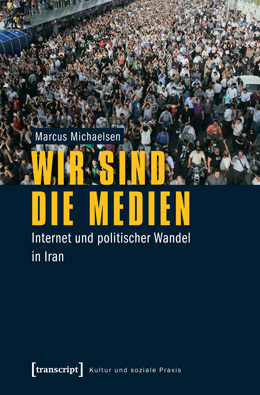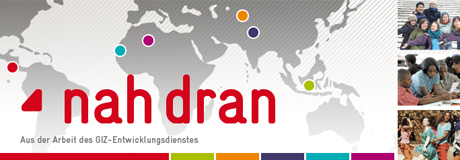This year, a number of medical device manufacturers have released 3D-compatible endoscopes for laparoscopic surgery, whereby an endoscope is inserted through multiple keyhole incisions in a patient’s abdomen, allowing the surgeon to confirm video images displayed on a monitor in real time. In conventional laparoscopic procedures, surgeons generally have to check the images on an external monitor as they perform the surgery, restricting their posture and movement. Now we see that those visualization technologies are being integrated into head-mounted displays, that enable the surgeon to position themselves flexibly as they perform their procedures. Sony for instance just announced the launch of a head-mount image processing unit capable of receiving and outputting endoscope image signals, or controlling video images, which can then be displayed in 3D or 2D on an accompanying head-mounted monitor. Now if this connects to the AR-innovations we could see a whole new dimension of virtual surgery. However, I am not sure if the possibility of easily switching between the virtual and the „real“ perspective is really bringing that much of an advantage. Instead i would really like to see transparent displays that augment the view of the surgeon.
Oakley Airwave Hud Goggles
Als Head-up-Displays bezeichnet man Displaysysteme, bei denen Informationen in das Sichtfeld eines Betrachters projiziert werden, ohne dass er seine Blickrichtung ändern muss. Oakley hat letztes Jahr eines der ersten Consumergeräte rausgebracht. Ich habe die Airwave mal anprobiert und war etwas enttäuscht, weil ich gedacht hatte, sie wäre AR-fähig. Der Display ist aber opak und die Visualisierungen mittelmäßig. Sie ist aber praktisch, um entsprechende Metadaten beim Wintersport zu sammeln (Position, Geschwindigkeit, GPS-Track), das erledigen Apps wie Runkeeper allerdings auch. Im Grunde eignet sie sich meines Erachtens dann nur zur unmittelbaren Anzeige der Metadaten – technisch müsste AR doch da locker möglich sein, weil man eine schöne Projektionsfläche zur Verfügung hat.
Augmented Intervention Assistant
In contrast to the consumer market, the development for head-mounted-display applications for medical use is slowly reaching an acceptable level of technical practicability. We will probably see the first devices in operating theatres soon, although there are still many problems to overcome such as usability, implementation in the workflow, clinical restricitions or acurate tracking methods. While projects like narvis (Siemens, TUM, LMU) still stated in 2007 that „die derzeitige HMD-Technik aufgrund von Gewicht und mangels Tragekomfort nicht durchgehend während einer OP getragen werden kann“, this concept study by Kilian Kreiser from 2010 shows a usecase of how pre-operative data can be implemented in the surgery process. Kilian’s „Augmented Intervention Assistant (AIA) is a head-mounted display-based system designed to simplify image-guided surgery processes and provide intelligent support during operations. The AIA combines pre-operational images with the position tracking of instruments, the operating field, and the surgeon to augment the physician’s field of view with virtual information. Surgeons thus gain access to information during operations that had not been available to them in this form up to now. During operations, a built-in augmented reality interface provides additional information such as patient anatomy, position of tumour tissues, pre-operational planning, and other relevant data, allowing the surgeon to precisely mark out tumour tissues or critical areas.“ Check also the project’s website for more details. (Image credits: Kilian Kreiser in Kooperation mit Pilotfish München)
CfP Figurationen von Mensch und Technik
Aus der Ausschreibung: „Das dynamische Verhältnis zwischen Mensch und Technik ist von zunehmender Verschmelzung und Entgrenzung geprägt, wobei die damit einhergehenden Wandlungsprozesse in unterschiedlichem Maße Aufmerksamkeit erfahren: Während soziale Netzwerke einen unübersehbaren Aufstieg erleben und „einen Trend gesteigerter Visibilitätszwänge“ (Reichert 2007: 212) etabliert haben, entwickelt sich das Internet der Dinge (vgl. auch Ubiquitous Computing bei Weiser 1991) eher unsichtbar (Fleisch/Mattern 2005). Ebenfalls nahezu unbemerkt scheint die Mensch-Maschine-Schnittstelle zu verblassen, seitdem sich z.B. Navigationsgeräte und Smartphones auch ,wortgewandtʻ zeigen und Hardware in einer intelligenten Umgebung aufgeht. Die besagten Phänomene kündigen einen Paradigmenwechsel an, im Zuge dessen das funktionale Bild der Extensions of Man (McLuhan 1964) als bloße Mittel der Natur- und Umweltgestaltung von einem Verständnis ablöst wird, welches Technik als festes Konstituens des Selbst und der Identität fasst: Der Mensch der Gegenwart figuriert sich durch Hightech. Hieraus ergeben sich gänzlich neue Handlungszusammenhänge. Diese werfen die Frage auf, welchen Platz der Mensch in der/den von ihm erschaffenen Lebenswelt(en) einnimmt oder sich zugesteht.“
23–24.05.2014 im Karlsruher Institut für Technologie (KIT) Deadline: 30.09.2013
Wir sind die Medien
Interessanter Band über das Verhältnis von Medien und politischer Transformation im Iran. „Wir sind die Medien“ beruht auf der Dissertation von Marcus Michaelsen an der Uni Erfurt und liefert im ersten (theoretischen) Teil einen guten Überblick über die Potentiale, Grenzen und Vorurteile über die Rolle des Internets für die Demokratisierung. Aus der Ankündigung: „Ob »Twitter-Revolution« oder »Cyberdemokratie« – häufig prägen Schlagworte die Debatte zum politischen Potenzial des Internets. Jenseits von Mythisierungen untersucht Marcus Michaelsen die Nutzung neuer Medien durch Opposition und Zivilgesellschaft im Iran – angefangen von den ersten Reformwebseiten über die Blogs von Journalisten und Frauenrechtlerinnen bis hin zu den sozialen Medien der Grünen Bewegung. Durch die Verknüpfung präziser Landeskenntnis mit Theorien der Politik- und Kommunikationswissenschaft entsteht eine ebenso fundierte wie anschauliche Analyse der Leistungen und Grenzen von Internetanwendungen in Prozessen des politischen Wandels.“
- Marcus Michaelsen, Wir sind die Medien. Internet und politischer Wandel in Iran. April 2013, 352 S., kart., 32,80 € ISBN 978-3-8376-2311-6, Reihe Kultur und soziale Praxis
GIZ-Brief „Neue“ Medien
Neuer Name, neues Layout, neue Rubriken – der „GIZ-Brief“ wurde grundlegend überarbeitet. Die erste Ausgabe beschäftigt sich mit neuen Medien – das „neu“ scheint man bei der GIZ offenbar weiterhin zu benutzen. Wäre vielleicht mal Zeit für einen neuen Begriff wie „soziale“ Medien… Die Ausgabe „Neue Medien – Wie Internet, SMS und Co. Entwicklung voranbringen“ gibts als PDF unter: www.giz.de/de/downloads/giz2013-de-nahdran-1-gesamtausgabe.pdf
Peer-to-Peer Economy – How can consumption become a social practice
Projekt „Un partenariat pour le renforcement et la professionnalisation des acteurs européens de l’économie sociale et solidaire“. Inter Made, Marseille, Jun 28, 2013
Der Vortrag zeigt wie alternative Konsumpraktiken nicht nur zu einer lokalen Ökonomie und einer ökologischen Landwirtschaft beitragen können, sondern darüber hinausgehend Strukturen der Beteiligung initiieren, die einen veränderten Zugang zu und Umgang mit Lebensmitteln eröffnen, das Verantwortungsbewusstsein für eine nachhaltige Infrastruktur stärken und die Sphäre des Konsums in den Bereich des Sozialen erweitern.
Counter Face Recognition
Even though I dont think this prototype will make it to the factory, it seems to be a better work-around than sunglasses and fake moustaches. I like that its an optical approach and not some kind of software-based firewall approach.
Medical Augmented Reality development
The Explore Engage Blog lists an interesting overview of the recent development in Medical Augmented Reality – some of them being developed in Germany including the Augmented Reality system Mirracle and the Surgery Pad, a mobile medical augmented reality App for the iPad by the German Cancer Research Center in Heidelberg.
Cfp: colloquium – Alexander von Humboldt Institute for Internet and Society
The Alexander von Humboldt Institute for Internet and Society is sending out invitations for the annual colloquium to be held in Berlin on 21 November 2013. In cooperation with Friedrich-Ebert-Stiftung it aims to assemble early stage researchers (Ph.D. candidates and post-docs) from all disciplines in order to push ahead with the discussion revolving around Internet research. The colloquium provides a stage for new perspectives on current issues of Internet and society. While the research topics of the institute are grouped more around entrepreneurship, business & innovation, governance etc., in other words a bit away from humanities or activist perspectives, this year’s call also includes a session on protest: „Slacktivism, activism and protest online. Does the internet have what it takes to be political? Online activism is a widely debated topic. It raises the question as to which degree and under what circumstances online action is an effective part of political participation. This session welcomes submissions from both theoretical and empirical perspectives on various forms of online activism and political par¬ticipation online, for example online petitions or hacktivism.“ Submission deadline is the 26 June 2013. Check the website for details.


